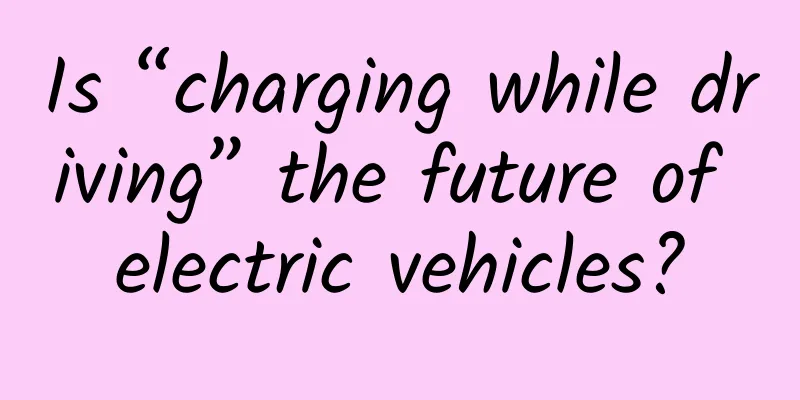Is “charging while driving” the future of electric vehicles?

|
Recently in Paris, US chipmaker Qualcomm unveiled a technology that is a far cry from its traditional core business of smartphone processors and computers: wireless chargers for electric vehicles. On a 100-metre test track, the company showed two Renault Kangoo vans drawing power directly from cables beneath the ground as they drove down the road. The demonstration marked a breakthrough in a technology that could change the economics of electric vehicles. Electric vehicle sales are rising as carmakers introduce new models that can travel farther on a set of batteries. But a lack of charging infrastructure, coupled with price and battery range, remains a significant barrier to widespread adoption. Analysts predict that once prices are on par with those of traditional internal combustion engine vehicles, which could take five to 10 years, sales of battery-powered vehicles will take off. So the industry is turning its attention to the question of what to do when there are more electric cars on the road than conventional chargers can handle. “There will be a point in the future when things will change dramatically, when (electric cars) will become ubiquitous and we have to think about new things,” said Edouard Fischer, a director at Sanef, a French toll motorway operator. “We have to be ready for what is going to happen in 10 to 15 years.” How will self-driving cars change our lives? Autonomous driving will improve congestion and reduce accidents, but they will also have mixed effects on public transport, the property market and health. Sanef has chargers every 80 kilometres on its 2,000-kilometre network of toll roads. The number of electric cars on its roads has risen 250 per cent in the past year, Mr Fischer told the Financial Times’ Future of the Car Summit. But at some point, fixed chargers will no longer be enough to cope with the number of electric cars on the road. With below-the-road chargers, a system of cables laid under the motorway surface can charge cars just enough to keep them from running out of juice mid-route. After perhaps hundreds of kilometres on such a motorway, a car would have the same charge left as when it entered. This could transform the range of electric cars, which currently have to stop to recharge before they run out of juice, lengthening journey times on long journeys. Gilles Normand, Renault’s head of electric vehicles, says developments in the field are “very, very fast”. Daimler, owner of BMW and Mercedes, is already developing induction plates for plug-in hybrid cars that would allow them to charge wirelessly. Nissan showed off its first prototype system in 2010. The car stops over the induction plate and power is transferred wirelessly to the car. Normand points out that three years ago, Renault’s induction plate needed to be just half a centimetre off the ground to connect. Today, the distance is four centimetres and the equipment required is much lighter than it was three years ago. While the technology may work well in a garage, getting the system to work perfectly and safely on a motorway will be more difficult. Sensors under the ground must be able to identify and charge a car before it pulls out, which requires nanosecond reaction times. Qualcomm says its new system can charge a car while it's driving at high speeds, with two cars able to charge on the same stretch of road. There are other logistical hurdles before the system can be moved from test roads to public roads. A lane must be reserved for cars equipped with on-road charging equipment, or the sensors must be able to identify whether a non-chargeable car is pulling in. The cars will also pay for charging as they go, which will require the cars to be equipped with instant payment systems. The cost of damaging highways to install cables and sensors will be huge, costing tens of billions of euros even if the system is limited to Europe. Some believe the hurdles and costs mean the technology is unlikely to be adopted in the near future. Erik Fairbairn, founder of POD Point, an electric vehicle charging service operator, says the idea of on-road charging is "very off the mark". He predicts that charging behavior will change. Instead of drivers relying on "gas station-like charging stations" as they do now, chargers will be more commonly installed in homes and offices, where they can replenish power when needed. Since most electric cars are fully charged at home, Fairbairn said that on average only 3% of drivers need to recharge during a trip. In this case, the vast majority of electric car trips can be completed without charging. "If you have a full tank of gas in your car every morning, how often do you need to refuel? For most of us, it's very rare," he said. As a winner of Toutiao's Qingyun Plan and Baijiahao's Bai+ Plan, the 2019 Baidu Digital Author of the Year, the Baijiahao's Most Popular Author in the Technology Field, the 2019 Sogou Technology and Culture Author, and the 2021 Baijiahao Quarterly Influential Creator, he has won many awards, including the 2013 Sohu Best Industry Media Person, the 2015 China New Media Entrepreneurship Competition Beijing Third Place, the 2015 Guangmang Experience Award, the 2015 China New Media Entrepreneurship Competition Finals Third Place, and the 2018 Baidu Dynamic Annual Powerful Celebrity. |
<<: All robots men want can satisfy artificial intelligence or have entered a legal blind spot
Recommend
In just 4 steps, you can quickly create heartfelt social advertising ideas!
Today I will analyze a social advertisement in Mo...
Review: The ups and downs of a marketing campaign
A marketing campaign, from planning to implementa...
How to plan a hot-selling content promotion that will sweep the screen?
Most content operators expect explosive content ,...
The rise of the “leaseback model”: a new variant of cash loans?
At the end of last year, after the regulation of ...
6 reasons why Douyin live broadcast room was banned!
Douyin is currently strictly regulating the behav...
Star coaches teach you how to run scientifically
Course Description In life, we often hear people ...
Does "Omicron" affect existing vaccines and nucleic acid testing? Authoritative answer from the National Health Commission
Regarding the Omicron variant of the novel corona...
How to write the competitive product word creative ideas for bidding hosting companies?
We have mentioned before that visitors have three...
Double 11+ KOL advertising trends and influencer marketing in 2021
Insight report on the 2021 Double 11+ KOL adverti...
Super shorthand for RecyclerView adapter
[[144456]] RecycleView is a new control. It stand...
I have a bad memory and forgot to take my medicine. Should I take double the dose or just not take it?
As people age, many middle-aged and elderly peopl...
What methods do internet celebrities like Papi Jiang use for live streaming?
Live streaming has gradually evolved from an earl...
Is it reasonable to use myopia rate as a double reduction assessment indicator?
On the eve of the two sessions, some people sugge...
What happened when a Tsinghua University student sued ofo for 400 yuan in compensation? What is the specific situation?
What happened when a Tsinghua University student ...
WeChat responds to reading user photo albums: This function will no longer be used
Earlier today, some netizens revealed that WeChat...




![Liang Jinghong's Color Design Principles [HD]](/upload/images/67cc24fe11d10.webp)




